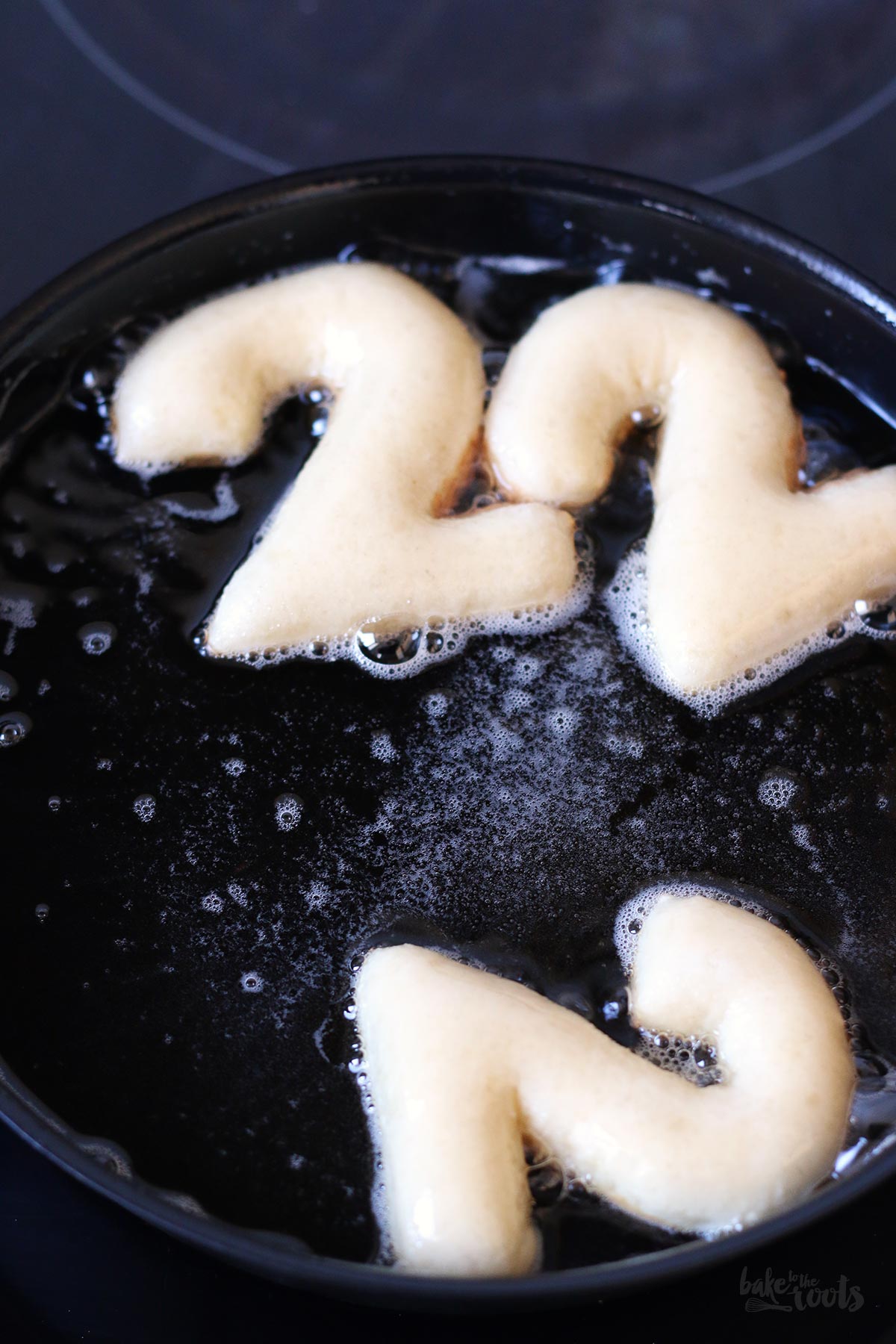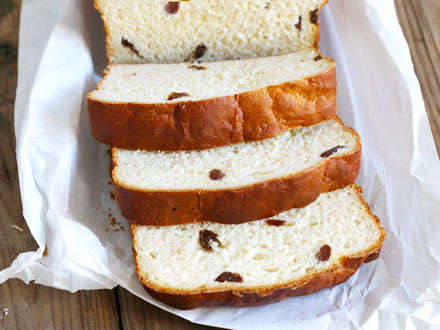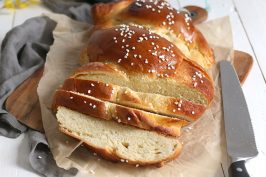Another year comes to an end. Somehow I had the feeling that this year passed by much faster than usual. I know that the older you get, the faster the years go by, at least it feels that way, but this year was a bit different. Because of COVID and all the time spent at home, it sometimes seems to me as if the previous pandemic-free years are already far in the past and we’re jetted through 2021 with turbo engines. Oh well. Everything will be better next year. Isn’t that what they say? This should be celebrated properly, with these delicious New Year’s Eve Donuts aka. Berliner Pfannkuchen – that’s what we call it here ;)

I am not sure where this tradition is coming from and who on earth is doing it every year… but here in Germany, it is quite common to serve Donuts aka. Berliner (we normally do not add Pfannkuchen to the name) for New Year’s Eve. Most of the time you do not make them yourself at home – we normally buy them in a bakery or supermarket. It’s more convenient when you already have a lot on your plate around the holidays… but sometimes you just want to make these fried treats yourself. Because they are muuuuch better when you eat them freshly made ;P
I am not kidding. The ones from the bakery are good, but homemade Berliner are much better – no matter if they look nice or bad. Always better. In this case, I also made the numbers for next year so everybody knows what’s coming up ;) I think they turned out pretty good.


The recipe is pretty much the same as if you make Glazed Donuts – I have a recipe with many tips and tricks already on the blog – feel free to check that one out too. It might help if you are not very familiar with handling yeasted dough and frying it.
Note: If you want to get the year numbers neat, you should make a stencil – this will make it much easier to cut out the numbers and if you make several numbers they will look all the same. Make sure that the numbers have the same height as the diameter of the donut cutouts – you want them to match I guess ;)
INGREDIENTS / ZUTATEN
For the dough:
3/4 cup (180ml) milk
1.4 oz. (40g) butter
2 tbsp. sugar
3 cups (390g) all-purpose flour
0.7 oz. (21g) fresh yeast
3 medium egg yolks
For the filling/decoration:
1 jar of jam
2-3 tbsp. confectioners’ sugar for dusting
fat/oil for deep-frying
Für den Teig:
180ml Milch
40g Butter
2 EL Zucker
390g Mehl (Type 550)
21g frische Hefe
3 Eigelb (M)
Für die Füllung/Dekoration:
1 Glas Marmelade
2-3 EL Puderzucker zum Bestäuben
Fett/Öl zum Ausbacken


DIRECTIONS / ZUBEREITUNG
2. Add the flour to a large bowl, create a well in the center, crumble the yeast, and place in that well. Add some of the milk and mix with the yeast to dissolve it. Sprinkle flour from the edges on top of the milk mixture and cover the bowl with a kitchen towel. Let rest in a warm place for about 10 minutes.
3. When the yeast has bubbled up a bit, add the rest of the milk as well as the egg yolks and knead everything for several minutes until you get a nice smooth dough that comes off easily from the sides of the bowl. Shape the dough into a ball, cover the bowl and let rise in a warm place for about 1 hour or until the dough has doubled in size.
4. Knock the air out of the dough and roll out on a lightly floured surface to a thickness of about 0.2 inches (0,5cm). Use a cookie cutter or glass and cut out circles with a diameter of about 2.8 inches (7cm). You can collect the leftover dough and roll it out again, but try not to overwork the dough. If you want numbers, you can simply cut them out with a stencil. Place the dough pieces on a lightly floured board or baking tray, cover with a kitchen towel and let them rise for another 20 minutes.
5. Add the fat/oil to a pot and heat up to about 350°F (175°C) – a thermometer* is very helpful here. If the temperature is too low, the dough will suck up a lot of fat, if the fat is too hot, the dough will darken too quickly and not bake properly, so keep an eye on that. Deep-fry the risen dough pieces (no more than 2-3 at a time) in the hot fat/oil – about 2 minutes on one side and then turn them around and let them fry for another minute or so on the other side. Thinner numbers should only be in the fat for 1 minute on each side. Take out and let drain on a piece of kitchen paper. Repeat with the remaining dough pieces until everything is done.
6. Stir the jam briefly to soften it and fill it into a piping bag with a filling nozzle*. Insert the jam from the side into the donuts and dust with some confectioners’ sugar. Serve on the same day.
2. Das Mehl in eine große Schüssel geben, eine Mulde formen und die Hefe zerbröckeln und hineingeben. Etwas von der abgekühlten Milch dazugeben und mit der Hefe verrühren. Etwas Mehl von den Rändern der Mulde über die Hefemilch geben und dann die Schüssel mit einem Tuch abdecken und für etwa 10 Minuten an einem warmen Ort stehen lassen.
3. Wenn die Hefe etwas aufgegangen ist, die restliche Milch und die Eigelbe zur Schüssel dazugeben und alles für mehrere Minuten zu einem glatten Teig verkneten – der Teig sollte sich vom Rand der Schüssel lösen. Den Teig zu einer Kugel formen und dann abgedeckt in der Schüssel für etwa 1 Stunde an einem warmen Ort gehen lassen, bis sich das Volumen des Teiges in etwa verdoppelt hat.
4. Den Teig einmal kurz boxen, damit Luft entweichen kann und dann auf einer leicht bemehlten Fläche etwa 0,5cm (0.2 inches) dick ausrollen. Mit einem Ausstecher oder Glas etwa 7cm (2.8 inches) große Kreise ausstechen. Teigreste kann man noch einmal zusammenkneten und dann erneut ausrollen. Wer Jahreszahlen möchte, kann die einfach mit einer Schablone ausschneiden. Die Teigstücke auf ein leicht bemehltes Brett oder Blech setzen, abdecken und dann noch einmal 20 Minuten gehen lassen.
5. Kurz bevor die Teigstücke fertig gegangen sind, Fett oder Öl in einem Topf auf 175°C (350°F) erhitzen – ein Thermometer* ist hier sehr hilfreich. Wenn die Temperatur zu gering ist, saugt sich der Teig mit Fett voll, bei zu hoher Hitze, wird der Teig zu schnell dunkel und backt nicht richtig durch. Die gegangenen Teigstücke (nicht mehr als 2-3 auf einmal) im heißen Fett ausbacken. Erst auf einer Seite für etwa 2 Minuten frittieren und dann umdrehen und etwa 1 Minute weiter frittieren. Dünnere Zahlen nur etwa 1 Minute je Seite ausbacken. Aus dem Fett fischen und auf einem Stück Küchenpapier abtropfen lassen. Mit den restlichen Teigstücken ebenso verfahren, bis alles ausgebacken ist.
6. Die Marmelade kurz aufrühren, damit sie weicher wird und dann in einen Spritzbeutel mit Fülltülle* einfüllen. Die abgekühlten Berliner/Krapfen von der Seite her einstechen und mit Marmelade befüllen und dann mit Puderzucker bestäuben. Die Berliner/Krapfen noch am selben Tag servieren.


Craving more? Keep in touch on Facebook, Twitter, Instagram and Pinterest for new post updates and more. You can also contact me with any questions or inquiries!
Here is a version of the recipe you can print easily.
Print
New Year’s Eve Donuts aka. Berliner Pfannkuchen
- Prep Time: 00:30
- Cook Time: 00:20
- Total Time: 02:30
- Yield: 15 1x
- Category: Donuts
- Cuisine: Germany
- Diet: Vegetarian
Description
New Year’s Eve without Berliner Pfannkuchen (aka. Donuts) would not be right. They are a must for every New Year’s Eve party and soo delicious ;)
Ingredients
For the dough:
3/4 cup (180ml) milk
1.4 oz. (40g) butter
2 tbsp. sugar
3 cups (390g) all-purpose flour
0.7 oz. (21g) fresh yeast
3 medium egg yolks
For the filling/decoration:
1 jar of jam
2–3 tbsp. confectioners’ sugar for dusting
fat/oil for deep-frying
Instructions
1. Add the milk, butter, and sugar for the dough to a small saucepan and heat up on the stove until the butter has melted and the sugar is dissolved. Remove from the heat and let cool down to about 97°F (body temperature).
2. Add the flour to a large bowl, create a well in the center, crumble the yeast, and place in that well. Add some of the milk and mix with the yeast to dissolve it. Sprinkle flour from the edges on top of the milk mixture and cover the bowl with a kitchen towel. Let rest in a warm place for about 10 minutes.
3. When the yeast has bubbled up a bit, add the rest of the milk as well as the egg yolks and knead everything for several minutes until you get a nice smooth dough that comes off easily from the sides of the bowl. Shape the dough into a ball, cover the bowl and let rise in a warm place for about 1 hour or until the dough has doubled in size.
4. Knock the air out of the dough and roll out on a lightly floured surface to a thickness of about 0.2 inches (0,5cm). Use a cookie cutter or glass and cut out circles with a diameter of about 2.8 inches (7cm). You can collect the leftover dough and roll it out again, but try not to overwork the dough. If you want numbers, you can simply cut them out with a stencil. Place the dough pieces on a lightly floured board or baking tray, cover with a kitchen towel and let them rise for another 20 minutes.
5. Add the fat/oil to a pot and heat up to about 350°F (175°C) – a thermometer* is very helpful here. If the temperature is too low, the dough will suck up a lot of fat, if the fat is too hot, the dough will darken too quickly and not bake properly, so keep an eye on that. Deep-fry the risen dough pieces (no more than 2-3 at a time) in the hot fat/oil – about 2 minutes on one side and then turn them around and let them fry for another minute or so on the other side. Thinner numbers should only be in the fat for 1 minute on each side. Take out and let drain on a piece of kitchen paper. Repeat with the remaining dough pieces until everything is done.
6. Stir the jam briefly to soften it and fill it into a piping bag with a filling nozzle*. Insert the jam from the side into the donuts and dust with some confectioners’ sugar. Serve on the same day.
Notes
Enjoy frying!
Links marked with an asterisk (*) are affiliate links (advertising/Werbung) to Amazon Germany. If you click on one of those links and buy something via this link, I will get a commission for that sale. The price of whatever you buy is not affected in any way by this.






 I love my job, but in between I love to bake and try new things in the kitchen. A lot of my friends and colleagues encourage me to bake - for a very simple reason: they get the leftovers - and it seems they like it most of the time ;)
I love my job, but in between I love to bake and try new things in the kitchen. A lot of my friends and colleagues encourage me to bake - for a very simple reason: they get the leftovers - and it seems they like it most of the time ;) 











